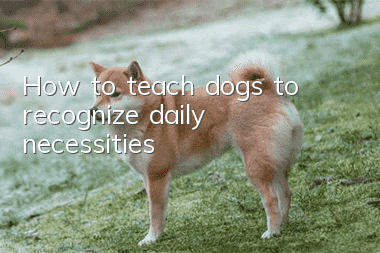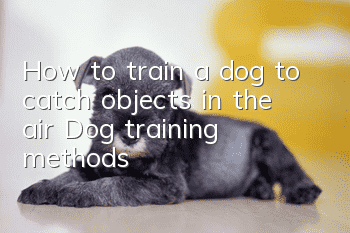How to teach dogs to “recognize daily necessities”

Furniture and commonly used utensils at home, especially utensils used on dogs, are also social targets that dogs must learn to understand. The props that are often used on it, such as hair combs, toothbrushes, nail clippers, razors, electric clippers and shampoo, must allow the dog to establish a "good feeling" so that the dog can learn from it at a very young age. , I have experienced gentle use, using gentle voice and body movements to let the dog actually use it slowly, and the dog will not reject it when it grows up.
Suitable age: 0 months-2 months
Training goal: The dog adapts to family life and accepts daily care from parents
Applicable dog breeds: all dog breeds
Equipment: comb | electric clipper | tools that dogs often come into contact with
Level: Elementary school (entry level) - basic training
Training cycle: 10 minutes*5 times
Dog training steps:
Step 1:It is best to start the education and training of dogs from an early age, let the dog come into contact with different people, things, and things, accumulate enough social experience, and educate and train with love and patience. Dogs can quickly accept and adapt to new things. The training method is: when you want your dog to learn a new thing, for example, combing your dog's hair, you must first let the dog see the comb.
Step 2: Talk to the dog softly and stroke it gently to make the dog feel relaxed.
Step 3: Pick up the comb and begin to gently comb the dog's hair, and continue to stroke it gently.
Step 4: From this moment on, the dog will develop a good impression of the action of grooming and will naturally like grooming.
Notes on dog training:
1. Please hug your dogs when you are free and let them feel gentle touch.
2. When your dog bites household items that it shouldn’t chew, try not to scare it with sounds, let alone use hitting or scolding to stop it. You can use the method of diverting attention to let the dog open its mouth. Go find the toys that belong to you.
- How long does dog hair loss last in spring? Teach poop owners several ways to reduce dog hair loss!
- Why is the dog always barking for no reason?
- What should I do if my golden retriever vomits after eating too much?
- Things to note when choosing puppy food
- The dog looks "guilty" after being taught a lesson by his owner. Does he really know he was wrong?
- What are the precautions and preparations for dog breeding? A complete guide to dog breeding!
- What are the symptoms of dog mite skin disease?
- A Practical Guide to Dog Bathing and Grooming in Winter
- The most effective way to deal with vomiting in dogs
- What medicine should a Pekingese dog take if it has a fever?



